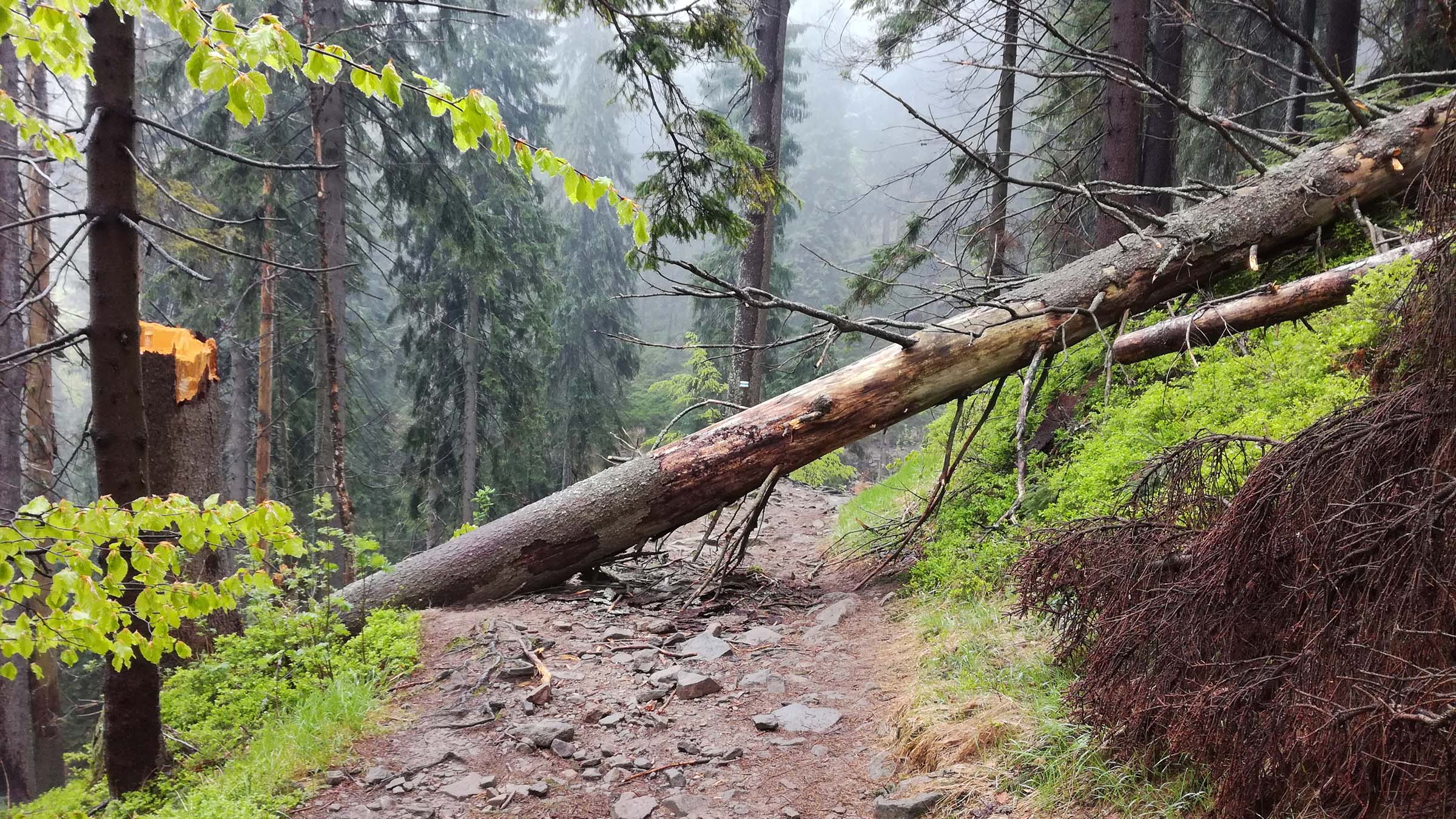Don't Become a Victim: How Situational Awareness Can Save Hikers' Lives

Standing dead trees can be a significant danger in a storm. (Photo: Dominik Staniek / EyeEm)
Extreme ironing can teach us a lot. If you’re unfamiliar with the “sport,” imagine competitors ironing clothes while skydiving, or pressing pants on a knife-edge ridge. Extreme ironing reminds me that when you’re really focused on doing something — whether ironing at altitude or caring for a colleague on a steep slope — situational awareness must be an absolute priority. Even if you’re fixated on the task, knowing how far you are from the edge of the cliff is pretty important.
In wilderness medicine, situational awareness means understanding what’s happening in the surrounding environment, identifying the risks facing caregivers, and reducing those risks to a tolerable level. A deliberate scene size-up and careful risk assessment should always be step one: a bunch of doctor friends and I once came across an overturned SUV on a remote road, a bloodied arm sticking out of the broken window. Only the paramedic in the group realized that the car was resting unsteadily, and started by stabilizing the vehicle so it wouldn’t roll over while the rest of us were trying to help.
“Stopping to make sure that the environment is as safe as possible means that more players stay in the game.”
The same principles apply when you’re a solo rescuer or just helping a friend. Take a moment to understand your environment: Maybe there’s a chance of additional rockfall, another bolt of lightning, or that the snake is still slithering around nearby. It’s almost never possible to create an entirely risk-free scene, but it’s critical to heed that voice in your head saying, there’s something not safe about this. I could get hurt. Potential risks include anything from changing weather to body fluid exposure, or even a disoriented and agitated patient. Planning ahead for these hazards might not prevent them, but can certainly reduce their impact.
Situational awareness also includes recognizing another potential danger — the psychological stress associated with taking care of sick people, maybe even people you know and love, in tough circumstances. We can’t just tap out in these situations, but we can recognize that there are ways to help make a scene an emotionally safer space. Start by applying the principles of psychological first aid: project calm, meet basic needs like warmth and shelter, and empower people to help themselves.
Rescuers sometimes find it difficult to put their own safety or well-being ahead of their patient’s, and end up running into danger when lives are at stake. That may seem noble, but stopping to make sure that the environment is as safe as possible means that more players stay in the game. After all, whether you’re ironing your trousers or trying to splint a broken arm, you won’t succeed if you’re pummeled by an avalanche that you didn’t see coming.
Christopher Tedeschi teaches and writes about wilderness and disaster medicine. He is associate professor of emergency medicine at Columbia University and an editorial board member for the journal Wilderness and Environmental Medicine. He enjoys hiking and biking near his home in the lower Hudson Valley.